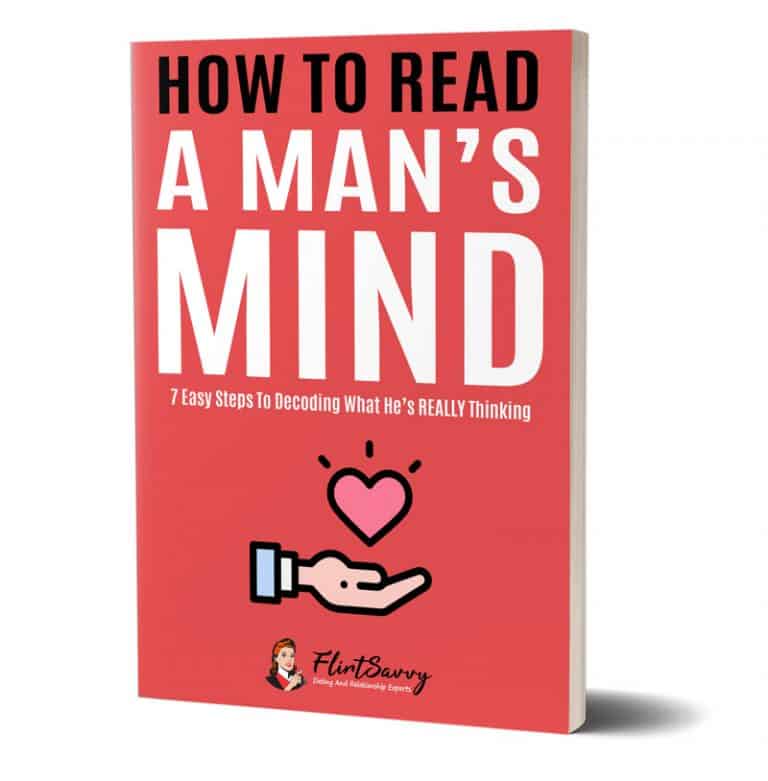Are you feeling a strong emotional connection to your boyfriend?
Do you find yourself constantly thinking about him and wanting to spend all your time with him?
It’s normal to feel attached to someone you care about, but sometimes that attachment can become overwhelming.
In this article, we’ll explore the reasons why you might be feeling so attached to your boyfriend and what you can do to maintain a healthy balance in your relationship.
From understanding attachment styles to learning how to give each other space, we’ll provide practical tips and insights to help you navigate the complexities of love and attachment.
So, if you’re wondering why you’re so attached to your boyfriend, keep reading!
Why Am I So Attached To My Boyfriend?
Attachment is a natural part of human connection, and it’s common to feel attached to someone you care about deeply. However, when that attachment becomes too strong, it can lead to feelings of anxiety, jealousy, and even obsession.
One reason you might be feeling so attached to your boyfriend is because of your attachment style. Attachment styles are patterns of behavior that develop in childhood and can affect how we form relationships as adults. If you had a secure attachment style growing up, you’re more likely to have healthy relationships as an adult. However, if you had an insecure attachment style, you might struggle with feelings of anxiety and clinginess in your relationships.
Another reason you might be feeling so attached to your boyfriend is because you’re not giving each other enough space. It’s important to have time apart from each other to pursue your own interests and maintain your own identity. When you spend all your time together, it can lead to feelings of suffocation and resentment.
Jealousy is another common reason why people become overly attached in their relationships. If you find yourself getting jealous when your boyfriend spends time with other people, it’s important to examine why you’re feeling that way. Is it because you don’t trust him? Or is it because you’re afraid of losing him? Understanding the root cause of your jealousy can help you address it in a healthy way.
Understanding Attachment Styles
Attachment styles are categorized into three types: secure attachment, anxious attachment, and avoidant attachment. Secure attachment is the healthiest attachment style, where a person is confident and self-possessed and can easily interact with others, meeting both their own and another’s needs. Anxious attachment is marked by a deep fear of abandonment, and people with this attachment style tend to be very insecure about their relationships. They often worry that their partner will leave them and are always hungry for validation. On the other hand, avoidant attachment is characterized by a prevailing need to feel loved but being emotionally unavailable in relationships.
Attachment styles develop in early childhood and continue to function as a working model for relationships in adulthood. Our experiences, especially those of our childhood, often impact our attachment style. How our parents and primary caregivers show us love (or lack thereof) develops our attachment style. It’s common that parents will even pass down their own attachment styles. Therefore, anxious attachment is often developed by an anxious or preoccupied parent, while avoidant attachment is often developed by a dismissive parent.
Understanding your attachment style can help you understand your strengths and vulnerabilities in a relationship. If you have an anxious attachment style, you might struggle with feelings of anxiety and clinginess in your relationships. It’s important to work on building your self-confidence and learning to trust your partner. If you have an avoidant attachment style, you might struggle with emotional intimacy and have trouble expressing your feelings. It’s important to work on being more open and vulnerable with your partner.
The Role Of Childhood Experiences
Childhood experiences play a significant role in shaping our attachment styles and how we form relationships as adults. Our primary attachment figures, usually our parents, lay the foundation for how we experience the world and our relationships. If we grew up in a happy, healthy, and stable home where caregivers were emotionally available and responsive to our needs, we’re more likely to have a secure attachment style. This means we’re comfortable with intimacy and can form healthy relationships without being too clingy or pushing partners away.
However, if we grew up in an emotionally absent or abusive household, we’re more likely to develop an insecure attachment style. This can lead to feelings of anxiety and insecurity in our relationships as adults. We might seek approval and reassurance from our partner, yet this never relieves our self-doubt. Insecurity can also make us worried and untrusting in our relationships, driving us to act clingy and overly dependent on our partner.
Childhood trauma can also greatly influence our attachment style. Prolonged exposure to a stressful event or repeated traumatic events layered on top of one another can lead to complex trauma. This can make it difficult for us to trust others or feel safe in intimate relationships.
It’s important to recognize how our childhood experiences have shaped our attachment styles and how they might be affecting our current relationships. By understanding the root cause of our attachment issues, we can work towards healing and forming healthier connections with others. Seeking therapy or counseling can be helpful in addressing childhood trauma and developing a more secure attachment style.
The Chemistry Of Love
The chemistry of love is a complex and fascinating topic that has been studied extensively by scientists. Attraction, the first stage of falling in love, is associated with high levels of the neurotransmitters dopamine and norepinephrine, and with low levels of serotonin. Dopamine, produced by the hypothalamus, is a well-known player in the brain’s reward pathway. It’s released when we do things that feel good to us, such as spending time with loved ones and having sex. High levels of dopamine and norepinephrine are released during attraction, which can make us feel giddy, energetic, and euphoric.
In fact, brain scans of people in love have shown that the primary “reward” centers of the brain fire like crazy when people are shown a photo of someone they are intensely attracted to, compared to when they are shown someone they feel neutral towards. Attraction also leads to a reduction in serotonin, a hormone that’s known to be involved in appetite and mood. Interestingly, people who suffer from obsessive-compulsive disorder also have low levels of serotonin, leading scientists to speculate that this is what underlies the overpowering infatuation that characterizes the beginning stages of love.
The second stage of falling in love is characterized by obsession and craving for your partner’s presence. This stage is associated with three chemicals: dopamine, norepinephrine, and serotonin. Dopamine creates a sense of novelty and motivation, while norepinephrine is responsible for the extra surge of energy and “racing heart” that you feel. Serotonin levels may decrease at this stage, causing obsessive thinking.
Finally, the attachment phase is where couples grow bonds and feel connected to each other. Two hormones come into play here: oxytocin and vasopressin. Oxytocin is referred to as ‘the love hormone’ or ‘the cuddle hormone’ because it’s released when we are touched, make eye contact and feel connected to someone. Vasopressin plays a role in social interactions between humans and encourages pair-bonding in monogamous, long-term relationships.
The Importance Of Healthy Boundaries
One key way to address attachment issues in your relationship is by establishing healthy boundaries. Boundaries are a way of taking care of your mental health and ensuring that your well-being is respected. By setting boundaries, you’re communicating your needs and limits to your partner, and giving them the opportunity to do the same.
Healthy boundaries can help you maintain a sense of individuality and autonomy within your relationship. They can also help reduce conflict, because they set clear expectations for what you both expect from each other. When you have healthy boundaries, you’re able to communicate openly and honestly with your partner, which can lead to a deeper sense of intimacy and connection.
On the other hand, unhealthy boundaries can lead to feelings of resentment, frustration, and anxiety. If you find yourself constantly sacrificing your own needs for the sake of your relationship, or if you feel like your partner is constantly crossing your boundaries, it’s important to address these issues.
Learning how to set healthy boundaries can take practice, especially if you grew up in an environment where boundaries were unclear or not respected. However, with time and effort, you and your partner can learn to identify where the boundary line should be in your relationship. By doing so, you can build a stronger and more secure bond that allows for both individuality and intimacy.
Learning To Give Each Other Space
Learning to give each other space is an essential part of any healthy relationship. It can be challenging to balance the need for closeness with the need for independence, but it’s crucial to find that balance.
One way to give each other space is by setting boundaries. Talk to your boyfriend about your needs and expectations for alone time. Let him know that you value your time together, but also need time to pursue your own interests and recharge. Encourage him to do the same.
Another way to give each other space is by practicing mindfulness. When you feel yourself becoming anxious or clingy, take a step back and focus on your breath. Acknowledge your feelings without judgment, and then let them go. This can help you stay present in the moment and avoid getting caught up in negative thought patterns.
It’s also essential to maintain a support system outside of your relationship. Spend time with friends and family, pursue hobbies and interests, and take care of yourself physically and emotionally. When you feel fulfilled in other areas of your life, you’re less likely to rely on your boyfriend for validation and support.
Remember that giving each other space doesn’t mean you love each other any less. It’s a way to strengthen your connection by respecting each other’s individuality and needs. By learning how to give each other space, you can create a healthy, fulfilling relationship that lasts.
The Benefits Of Maintaining Independence
Maintaining independence in a relationship can actually be beneficial for both partners. When you have your own friends, hobbies, and work, you don’t rely on your partner to fulfill your every need. This can help cultivate respect for each other and create a sense of individuality within the relationship.
Having time apart from each other can also help maintain a healthy balance in the relationship. It allows each partner to pursue their own interests and passions, which in turn can make them more interesting and attractive to each other. It also gives them time to miss each other and appreciate the time they do spend together.
Furthermore, maintaining independence can actually strengthen the bond between partners by creating a sense of trust and security. When both partners are secure in their own identities and have their own lives outside of the relationship, they are less likely to feel threatened or jealous when the other spends time apart. This can lead to a more open and honest communication between partners, which is essential for a healthy and lasting relationship.






